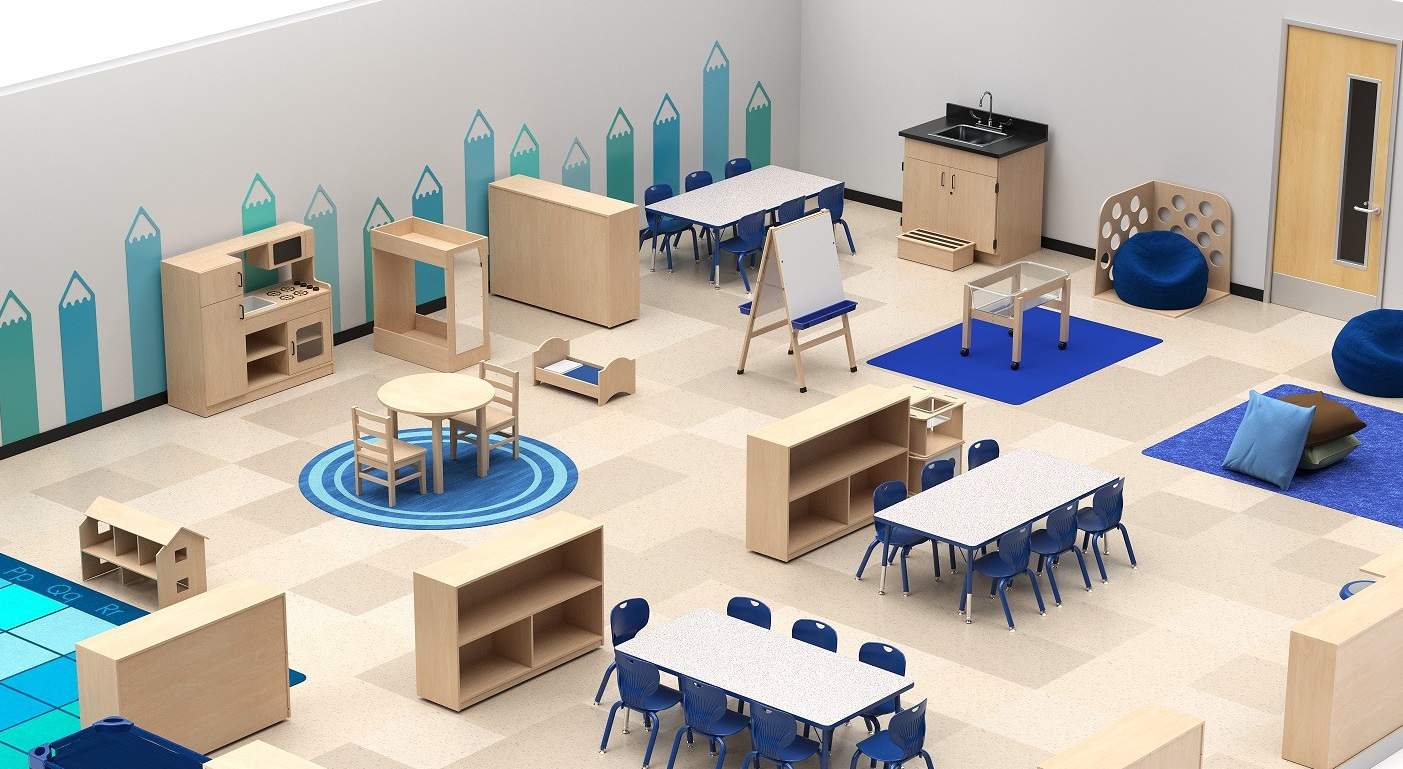In the early childhood education, the design of preschool classrooms holds significant importance. This exploration delves into the intricacies of crafting an inviting and conducive space for young learners. An early childhood classroom should be incorporating essential design principles to create an environment that fosters curiosity, creativity, and collaboration.
The Crucial Role of Early Childhood Classroom Design
Early childhood is a critical developmental phase where the learning environment profoundly influences a child's cognitive and social growth. A well-designed preschool classroom can serve as a catalyst for positive learning experiences, shaping the foundation for a child's educational journey. Following are the key consideration that should be kept in mind before designing an early childhood classroom for the best aesthetics to enchant children into a very friendly environment.
Layout and Spatial Arrangement
The spatial arrangement of a preschool classroom is a cornerstone of effective design. Cowboy Play advocates for dynamic layouts that accommodate various activities, echoing the importance of flexibility. Such arrangements enable seamless transitions between learning stations, play areas, and communal spaces, encouraging movement and interaction among young learners.
Color Psychology and Aesthetics
Color choices play a pivotal role in influencing the mood and behavior of young children. Cowboy Play's innovative designs showcase a thoughtful selection of warm and vibrant colors. These hues not only create a visually stimulating environment but also contribute to a positive and inviting atmosphere, fostering an ideal setting for early learning.
Learning Stations and Zones
An effective classroom design includes the incorporation of distinct learning stations and zones. Cowboy Play's emphasis on themed areas aligns with the concept of creating dedicated spaces for specific activities. This approach cultivates a sense of purpose and engagement among children, whether they are immersed in reading, art, or interactive play.
Incorporating Natural Elements
Bringing elements of nature into the classroom has been shown to positively impact children's well-being. Cowboy Play's designs often integrate natural elements, from plants to nature-inspired artwork. This not only enhances the overall ambiance but also creates a connection with the outdoors, contributing to a holistic learning environment.
Safety and Accessibility
Ensuring safety is paramount in a preschool classroom. Cowboy Play's designs feature well-defined play zones that prioritize safety. This approach ensures that children can explore and learn without unnecessary risks, fostering a sense of confidence and independence crucial for their developmental journey.
Seven Design Principles used Worldwide for Crafting an Inviting Early Childhood Classrooms
The classroom environment plays a crucial role in shaping young minds, and by integrating seven key design principles, one can create a space that captivates, welcomes, and engages the senses. These principles, when harmoniously implemented, elevate the overall ambiance, motivating all who enter, stimulating those within, and rejuvenating interest.
Principle 1: Nature Inspires Beauty
Mirror the wonders of nature, encompassing sights, sounds, tastes, smells, and textures to deepen children's understanding and appreciation of their environment.
Principle 2: Color Generates Interest
Appropriately chosen accent colors against a neutral background direct interest towards individuals, fostering a positive environment.
Principle 3: Furnishings Define Space
Properly sized and placed furnishings demarcate areas, elevating the quality and depth of children's play experiences.
Principle 4: Texture Adds Depth
Incorporate texture for visual interest and unique tactile experiences, sharpening observational skills and fine motor abilities.
Principle 5: Displays Enhance Environment
A clutter-free environment, organized storage, and showcased children's work transform the classroom into a backdrop that honors all occupants.
Principle 6: Elements Heighten Ambiance
Multiple sources of light cultivate an ambiance of relaxation and contemplation, allowing creative interaction with others and the surroundings.
Principle 7: Focal Points Attract Attention
Distinct focal points, such as interactive learning centers or beautiful artifacts, invite active engagement and participation in the environment.


